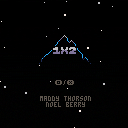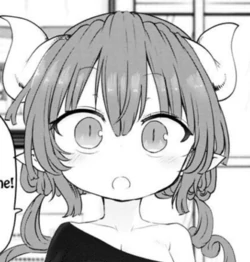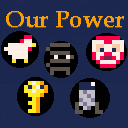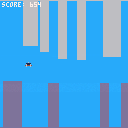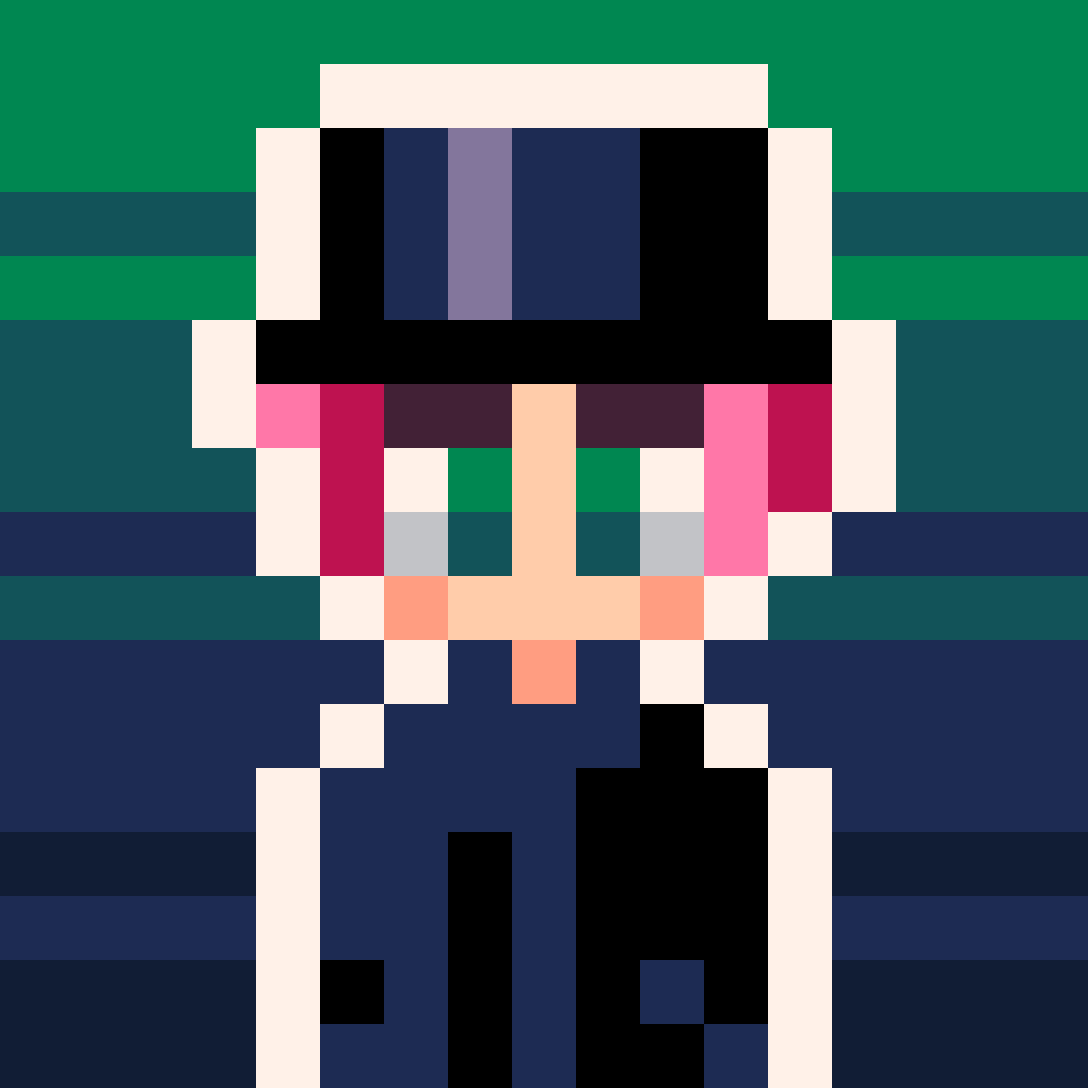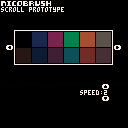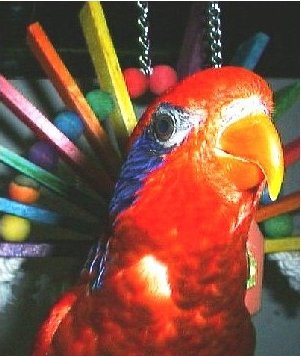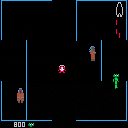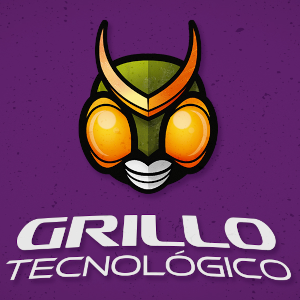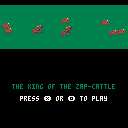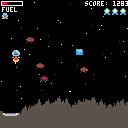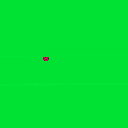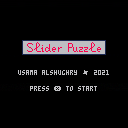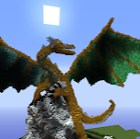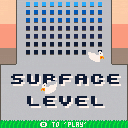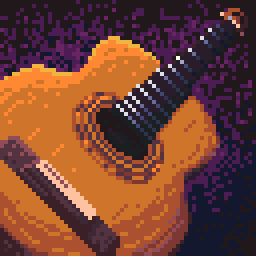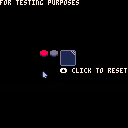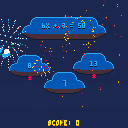Disco Dance-off is a rogue like inspired game where instead of fighting monsters you find dancers with the same outfit and dance with them, you can change outfit by dancing on a disco tile, and once you collect all colors you progress to the next floor. Each floor gets progressively harder, as you decent into madness, with stranger dancers and more colors.
This is the first game I made using Pico 8 so I hope you enjoy it :).
A simple 1-button game where you have to float and avoid blocks.
This was my first attempt at using PICO-8. I tried to make a very simple game after hastily finishing Dylan Bennett's Cave Diver tutorial. A few parts of the code are remnants from that.
Known Bugs:
- Blocks were supposed to have more variant sizes going all the way from top to bottom, and not having an average height to the middle of the screen, but making it so the blocks always generate with enough space among them so the player can avoid them was taking more time than I was willing to spend on this game at this time.
- Sometimes game is unbeatable because top and bottom blocks don't leave enough space in between them.
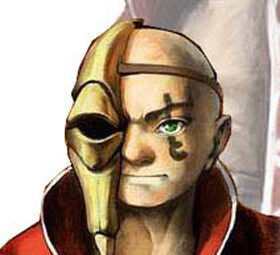
So, I've been working on a web based MIDI to PICO-8 converter for a while now. It was going pretty well, but today I introduced a bug, which totally corrupted the SFX data. The input was the traditional melody, Ghost Of John. The output was this:
Surprisingly, I like the way it sounds. I guess I composed some original music here, but it was completely accidental. I guess if you make enough mistakes, some of them are bound to turn out ok.
Now I just need to figure out what kind of game goes with this soundtrack. Any suggestions? Feel free to use this in your own projects if it fits.
Hello, I'm Going to Buy Pico-8, And I wanted to ask, Does Pico-8 run on a Raspberry Pi Zero W https://buyzero.de/collections/raspberry-pi-zero-kits/products/raspberry-pi-zero-w?variant=38399156114.
And if yes is there a way to make Pico-8 the "Operating System" so that it starts when I Booting up the Pc

I've started with pico-8 and game dev recently, so as to learn how to do stuff I decided to add features to the tutorial game. It still is not "complete", since I want to add a few more features before stopping.
The code is terribly messy, but I didn't have a clue on how to structure anything before. Hopefully I can learn before going on to making a game of mine.
This is the second of the two little utilities I've made, the first being stream-ecs (in a separate post.)
The github project page.
prot-oo
This one's a bit more straight-forward. Prototype based inheritance/OOP. It basically just defines the base object and a few methods.
Use create to use an object as a prototype for some other object:
dog = object:create() -- use the base object as prototype dog.sound = 'woof!' function dog:talk() print(self.sound) end cat = dog:create() -- use the dog object as prototype cat.sound = 'meow' dog:talk() -- woof! cat:talk() -- meow |
You can create classes (well, not really, because prototypes, but sort of) by defining a method called init and using the new method.
vec2D = object:create() function vec2D:init(x, y) self.x = x self.y = y end function vec2D:length() return sqrt(self.x^2 + self.y^2) end v = vec2D:new(3, 4) [ [size=16][color=#ffaabb] [ Continue Reading.. ] [/color][/size] ](/bbs/?pid=93466#p) |
I picked up a copy of PICO-8 a few months ago on a whim and have been playing around with it, following a tutorial here and there, etc. Really enjoying it and I love seeing the creativity of people in the community.
I have yet to try my hand at an actually complete game and, as I'm basically infinitely distractable, may never actually accomplish it. In the meantime, to learn some of the ins and outs of Lua, with which I was not previously familiar, I've combined two of my favourite software writing pastimes: re-inventing wheels and making tiny utilities.
In that spirit, I give you:
- stream-ecs (267 tokens), a (sort of) reactive stream based entity-component-system with automatic entity queue management, and
- prot-oo (72 tokens), prototype based object-oriented programming (in a separate post)
I'll describe them a bit below and there's more info at the github project page. Each tool has its own README describing it in detail.
stream-ecs
Two functions to draw outlined sprites (with some help from kreyk29!)
Regular version that does smooth outlines:
Another version that does square outlines:
Example carts:




if u think u good, go play here to compete for the highest score. winner gets nothing. wait, what? High scores in a pico-8 game? yes, we've technically achieved this. go here to check it out!
Controls
- left/right to adjust your speed
- up to fake a phone call
- z/c to jump
- x to grind
About the game
Player has cuss to do. People are in Player's way. They are asking Player deep questions. They are forcing Player to introspect. Player does not have time to deal with their emotional baggage. Player has cuss to do. Help Player!


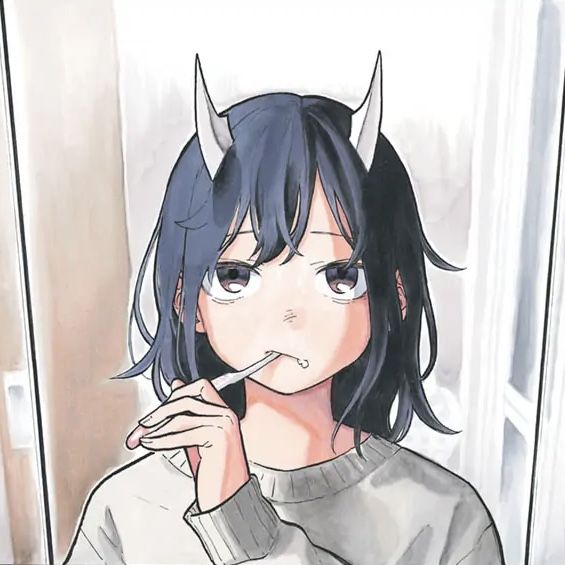
So I was making a project which needed some mouse support, and I decided to make an interface that was universally applicable. After some work to generalize the code, I created this example to share with you people.
The Interface
Usage is pretty simple, tab 1 in the cart above contains all one needs to be able to implement this, so just copy it over to a new tab in your cart.
Insert init_mouse in your _init, with a table containing your interactable elements (we'll come back to this table). update_mouse and draw_mouse are quite self-explanatory.
The mouse calls the function mouse_down whenever you left click, and mouse_up when released (I left right and middle clicking out to support people on mobile or other platforms where mouses have less buttons, but they're easy enough to implement if needed).







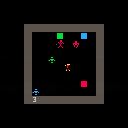
 1 comment
1 comment

